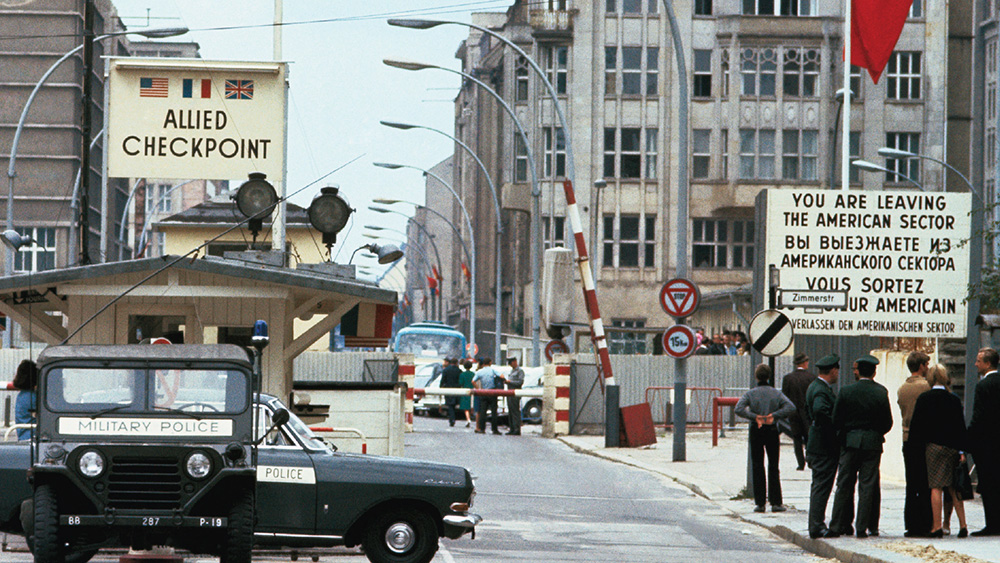Unit 8: Cold War and Decolonization
c. 1900 to the presentAs World War II ended, new global conflicts emerged. The Cold War between the United States and the Soviet Union and decolonization movements reshaped the world order.

Lesson 8.0
Cold War and Decolonization c. 1900 to the Present
From the late 1940s to the 1980s, the US–Soviet Cold War fueled a nuclear arms race and proxy wars. Both powers backed regional conflicts without direct confrontation.

Lesson 8.1
Setting the Stage for the Cold War and Decolonization
The Cold War and decolonization overlapped in a global struggle of ideology, economics, and power. After World War II, nations and leaders sought to reshape the world order through conflict and diplomacy.

Lesson 8.2
The Cold War
After World War II, tensions between the US and Soviet Union ballooned as they vied for global influence. Competing ideologies and power struggles soon divided Europe and spread through the world.

Lesson 8.3
Effects of the Cold War
During decolonization, the US and Soviet Union competed for influence in newly independent states, a competition that often fueled regional conflicts. Though the Cold War ended, its effects still shape the world today.

Lesson 8.4
The Spread of Communism After 1900
Following World War II, the communist movement grew in China as they clashed with nationalist forces. Communist policies brought both significant changes and lasting challenges to China and other regions as communism spread.

Lesson 8.5
Decolonization After 1900
Decolonization movements inspired resistance to oppression. People in Africa, Asia, and Latin America fought colonial rule and racism, sharing goals but facing unique challenges.

Lesson 8.6
Newly Independent States
Empires rise and fall due to internal and external forces. Leaders of newly independent states faced challenges with varying success shaped by social, political, and cultural factors.

Lesson 8.7
Global Resistance to Established Order After 1900
African American leaders and global decolonization inspired movements against oppression. While the tactics used by reformers were different, many of their goals were similar.

Lesson 8.8
The End of the Cold War
In 1991, the collapse of the Soviet Union left the US as the only standing superpower. This change brought freedom to some but caused economic struggles and ethnic conflicts in former Soviet states.

Lesson 8.9
Causation in the Age of The Cold War and Decolonization
The US–Soviet Cold War rivalry, alongside decolonization, sparked global change. Its effects varied across the Eastern and Western Hemispheres, reshaping politics and societies worldwide.
 Teaching This Unit
Teaching This Unit
Unit 8 Vocab
Key Unit 8 vocabulary words and definitions.

Reading Overview
Reading strategies to help students dig into a variety of texts.

OER Teaching Sensitive Topics in Social Studies Guide
Support for having discussions that are difficult, but meaningful.

Historical Thinking Skills Guide
Develop the skills needed to analyze history and think like a historian.

Differentiation Guide
Research-backed strategies for differentiation, modification, and adaptation.

Unit 8 Teaching Guide
All the lesson guides you need in one place.